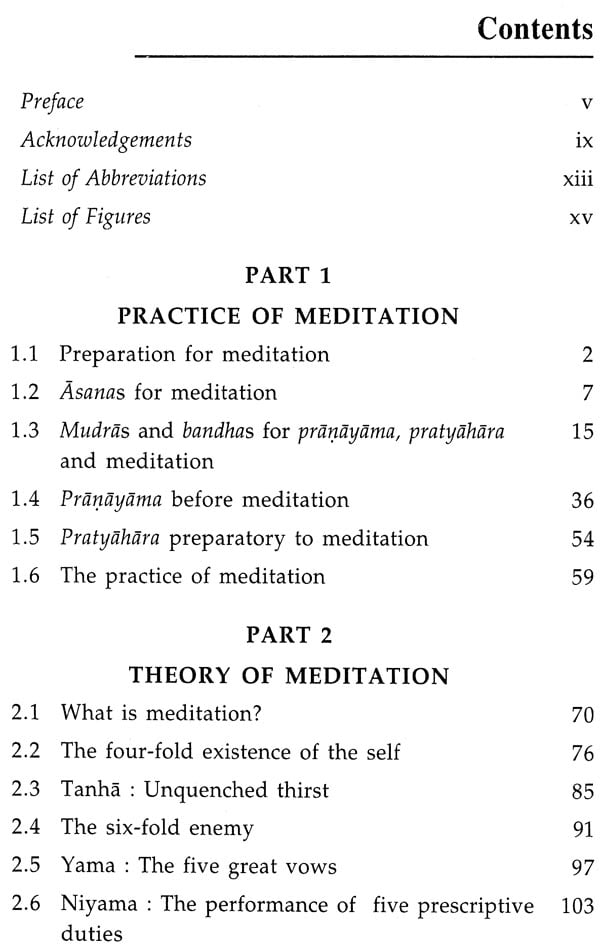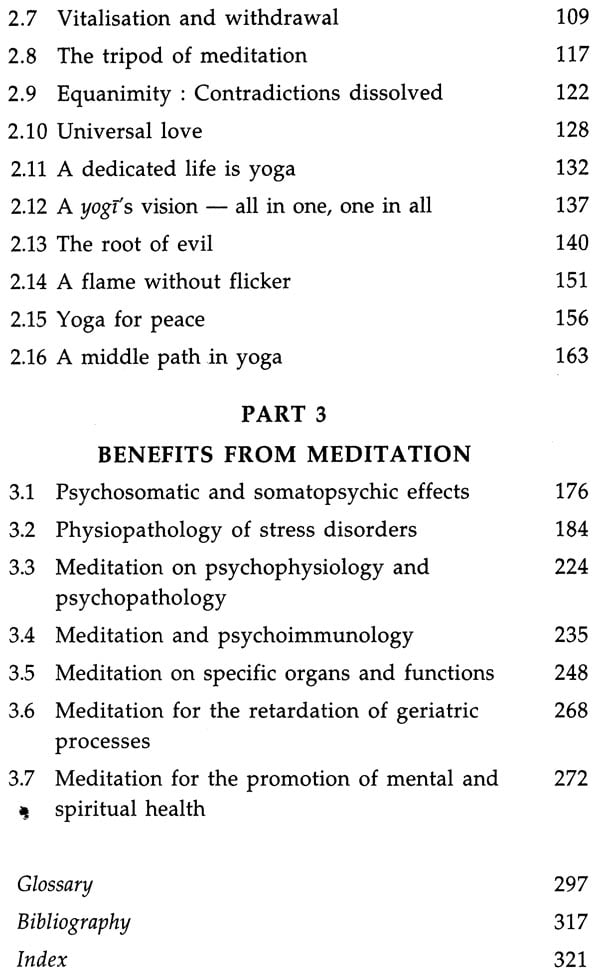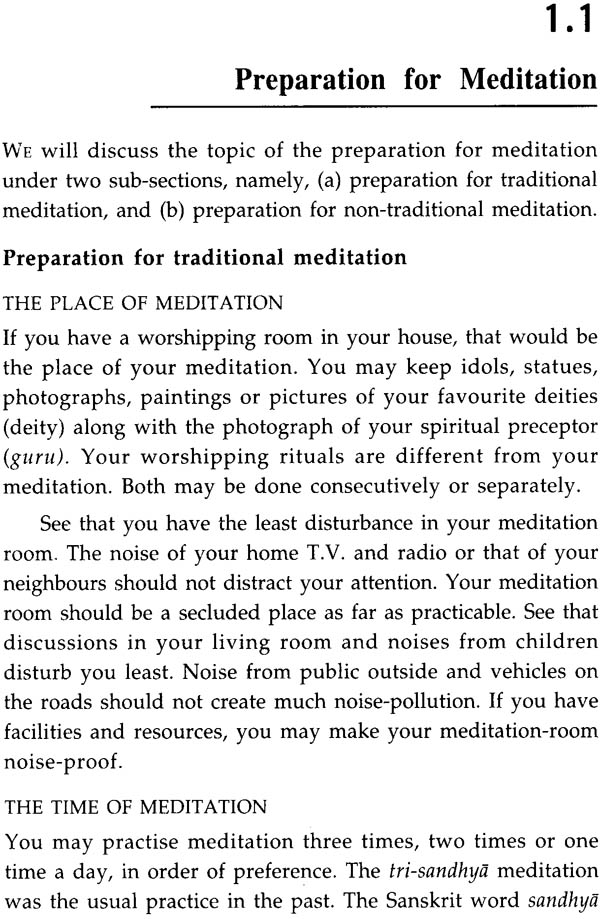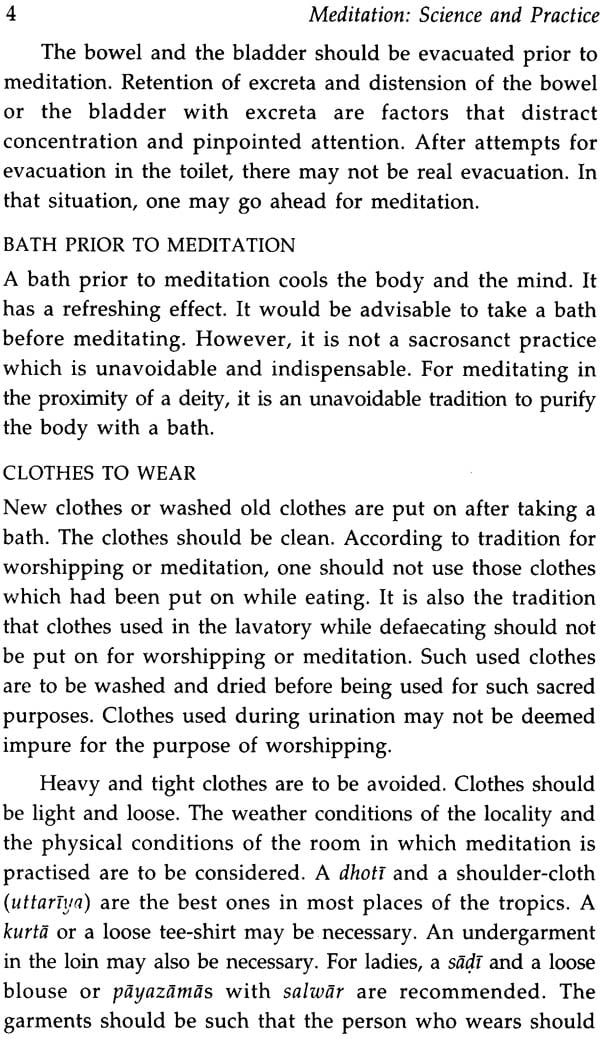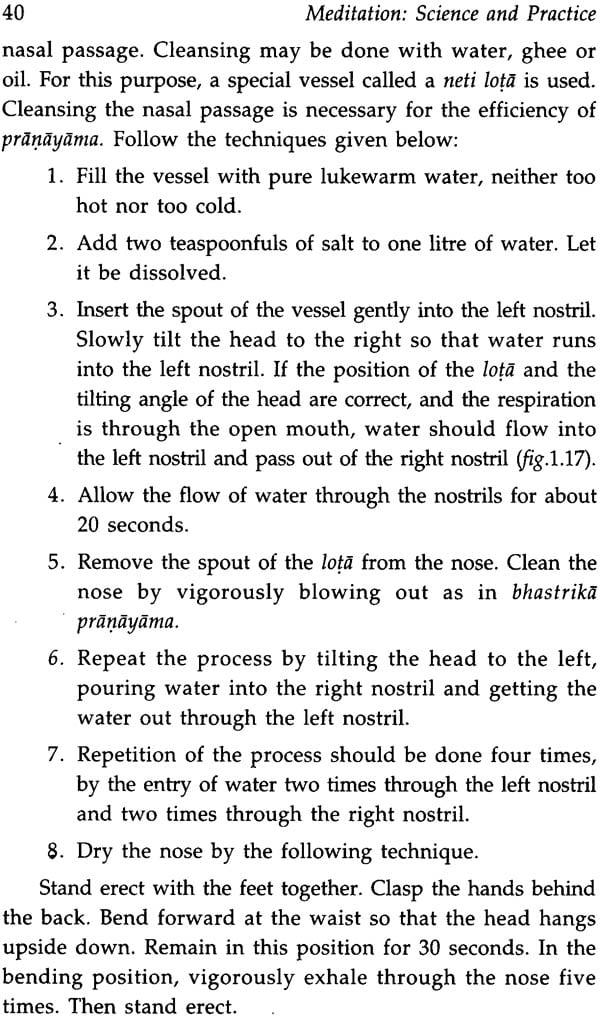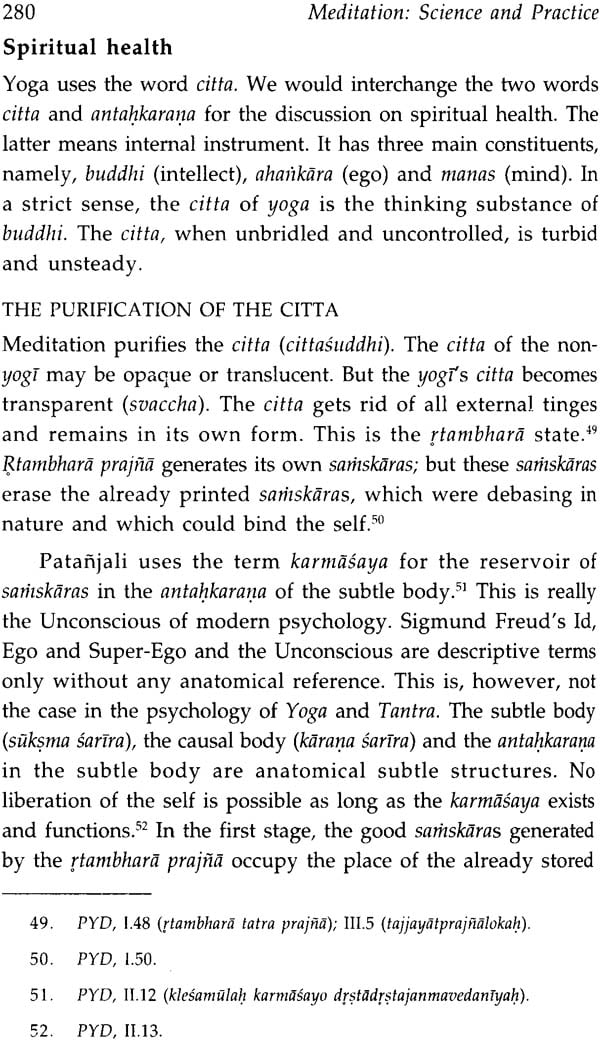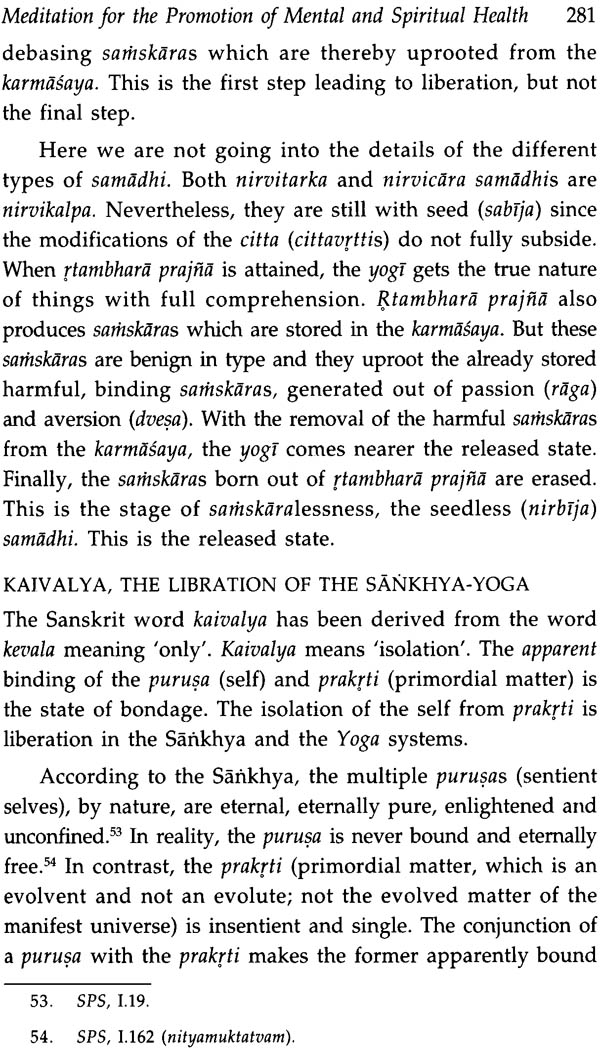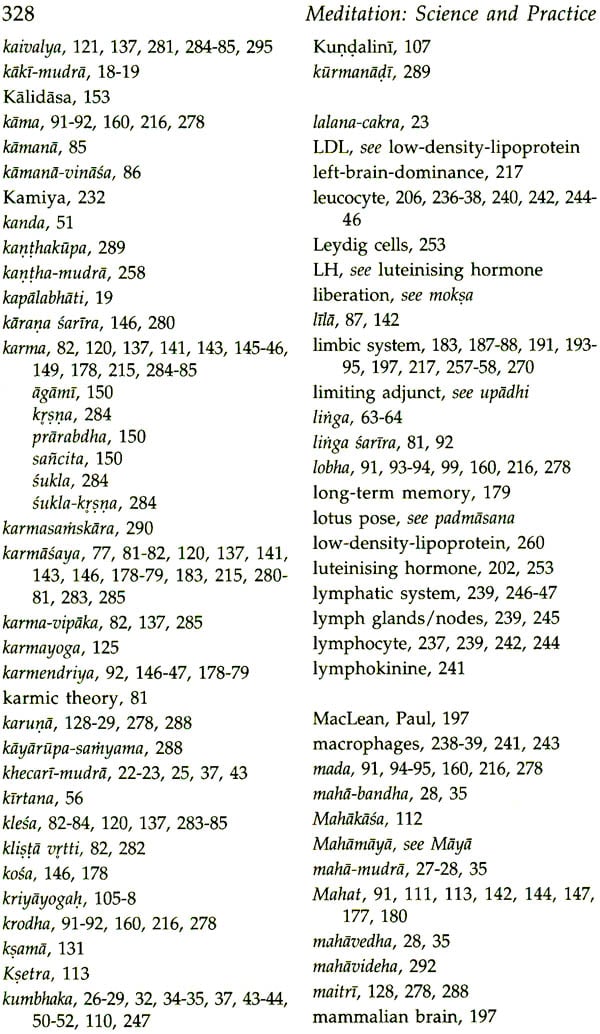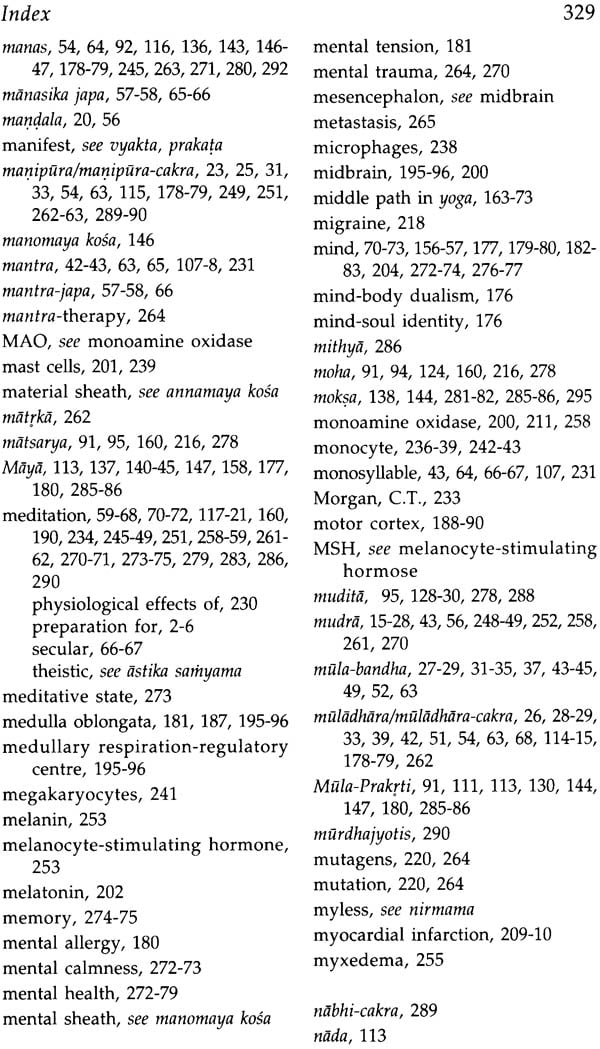About the Book Yoga, contrary to the popular perception, is not merely a system of physical culture. It is, in fact, a uniquely Indian discipline aiming to bring about the 'union' of an individual spirit with the Universal Spirit: the Cosmic Consciousness - through what in Yoga is known as Samadhi, a state of profound meditation. Patanjali Yoga-sutra, written sometime around the second century BC, is the first, systematic, at once authoritative presentation of Yoga: in both its theoretical and practical aspects. Professor N.C. Panda, who has had a lifetime involvement with the science and practice of Yoga, here outlines the eight limbs of Patanjali Yoga, with added emphasis on meditation - in all its three stages: darsana, dhyana and Samadhi; and how this ancient system of bodily and mental control is found to have a strong scientific basis. Offered in three parts, his book focuses, in Part 1, on the practice of meditation, with detailed guidelines concerning the relevant yogic postures, yogic breathing and breath-control. Part 2 presents Patanjali classical yogic theories, showing how these are validated: both theoretically and experimentally, by modern science. In Part 3, the author explains, in pure scientific terms, the physical, psychic, therapeutic and spiritual benefits surfacing from the practice of meditation. Through based on the principles of classical yoga, Professor Panda's book is truly a brilliant effort to treat Yoga as an advanced science. Including a comprehensive glossary of Sanskrit technical terms and numerous illustrations, it is invaluable to medical scientists / researchers / anyone interested in Yogic Meditation and how it can give a holistic, healthy and creative life.
About the Author Nursing Charan Panda is the 1929-born Scientist Emeritus - having retired from the Orissa University of Agriculture and Technology, Bhubaneswar, as Professor and Dean of the Veterinary Faculty. Notwithstanding his specialization in Nutritional Biochemistry, with M.Sc. and Ph.D. degrees of the University of Missouri, Columbia, USA, Dr. Panda is essentially a versatile personality, combining in him the endowments of a scientist, a Sanskritic, a philosopher, a psychologist, a litterateur, a yogi and a Tantric. His achievements have been recognized, at different times, with a number of prestigious awards in both science and literature.
Internationally reputed for his scientific interpretations of Vedic literature, Professor Panda has also authored a number of widely acclaimed books like Maya in Physics, The Vibrating Universe, Mind and Super mind (2 vols.). His is truly the integral, synthetic, holistic approach.
Preface How old Indian Yoga is has not been accurately determined. Four and a half millennia before Christ may be a roughly estimated date. Patanjali who lived perhaps in the second century BC systematically codified Yoga in aphorisms. In the Indian tradition, the detailed techniques of Yoga were passed on from the preceptor to the disciple through personal coaching and practical demonstration. We get some seminal knowledge on Yoga from the old Indian scriptures, but no old scripture dilates and elucidates the topic exhaustively. In the twentieth century, a number of books have been written by Indian and foreign authors on Yoga. For many persons, Yoga and asana (yogic postures) are synonymous. It is very unfortunate that such an erroneous concept has been deep-rooted in the minds of a wider population. Good books have been written on Hath-yoga with special reference to asana, band has, madras, pranayama and the six purificatory processes. In contrast, good books on meditation are not many. Some Yoga Schools keep their meditational techniques and the associated mantra for initiation secret and occult. A psychology of monopolisation and commercialisation is perhaps operative. Some such occult schools occasionally pass on wrong techniques to their initiated disciples. But no public debate can be made since these techniques do not appear in printed form. Some books on meditation are too much verbose and eulogistic with very little information on the actual methodology. Some modern Yoga Schools use new phraseology to show that their Yoga is a new discovery, not related in any way to the wisdom of ancient Indian seers.
Many modern Yoga Schools do not teach even the ABC of Patanjali Yoga-Sutra and the other classical Yoga scriptures. It is not our assertion that the classical Yoga cannot be further improved and that the last word has been said in the classical scriptures. But we question the appropriateness of the maintenance of quietude on the wisdom of the ancient seers.
Even in the first half of the twentieth century, Yoga was branded as a cult of superstitions by some Indian (so-called) rationalists whose pseudo-science is claimed to be the only science. Scientific experimentations done by some Western scientists, followed by similar work by a few Indian scientists, lent scientific credence to Yoga. Now it has a firm position in Physiology, Psychology, Therapeutics and Theology. Some authors have made good attempts in scientifically explaining the yogic processes and the benefits that accrue. Still it is felt that the science of meditation needs more vivid clarification. Such an attempt has been made in the third part of this book.
The second part of this book deals with the theory of meditation. Yogic theories and scientific theories have been explained with a holistic and synthetic approach. Any student of Yoga, not interested in yogic theory and scientific explanations, may omit part two and three of this book and may learn the practice of meditation from part one only.
We have not kept any meditational technique secret from our readers. The techniques have been methodically presented. The last three limbs of Patanjali Yoga have been grouped and combined named as 'meditation'. In addition, the other limbs of Patanjali Yoga that facilitate meditation have also been presented in a brief manner. Part one of this book is a brief compendium of meditational Yoga. Part two and three of this book is meant for advanced research workers on meditation. If Yoga ever enters into medical curriculum, part three of this book would perhaps provide the basic information.
Any practitioner of medicine, desirous of using yoga-therapy as a complementary one or as the main treatment, can use this book as a sample guide.
The theory and practice of Yoga for spiritual uplift, finally leading to liberation, have also been given in this book. After all, Yoga is principally a spiritual subject. And this spiritual aspect has not been ignored.
This author is not only a yoga-theorist, but a practitioner since his twenties. It is his firm conviction that yoga can improve the quality of life - physical, mental and spiritual. He would be happy if this book helps its readers not only in theoretical knowledge but also in actual practice.
Book's Contents and Sample Pages
